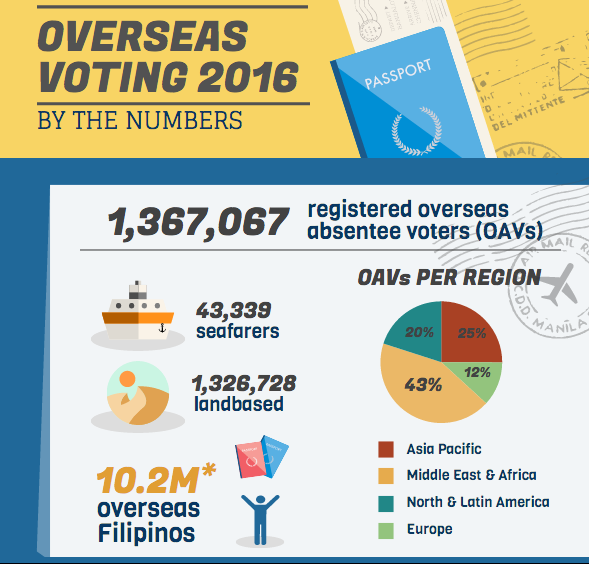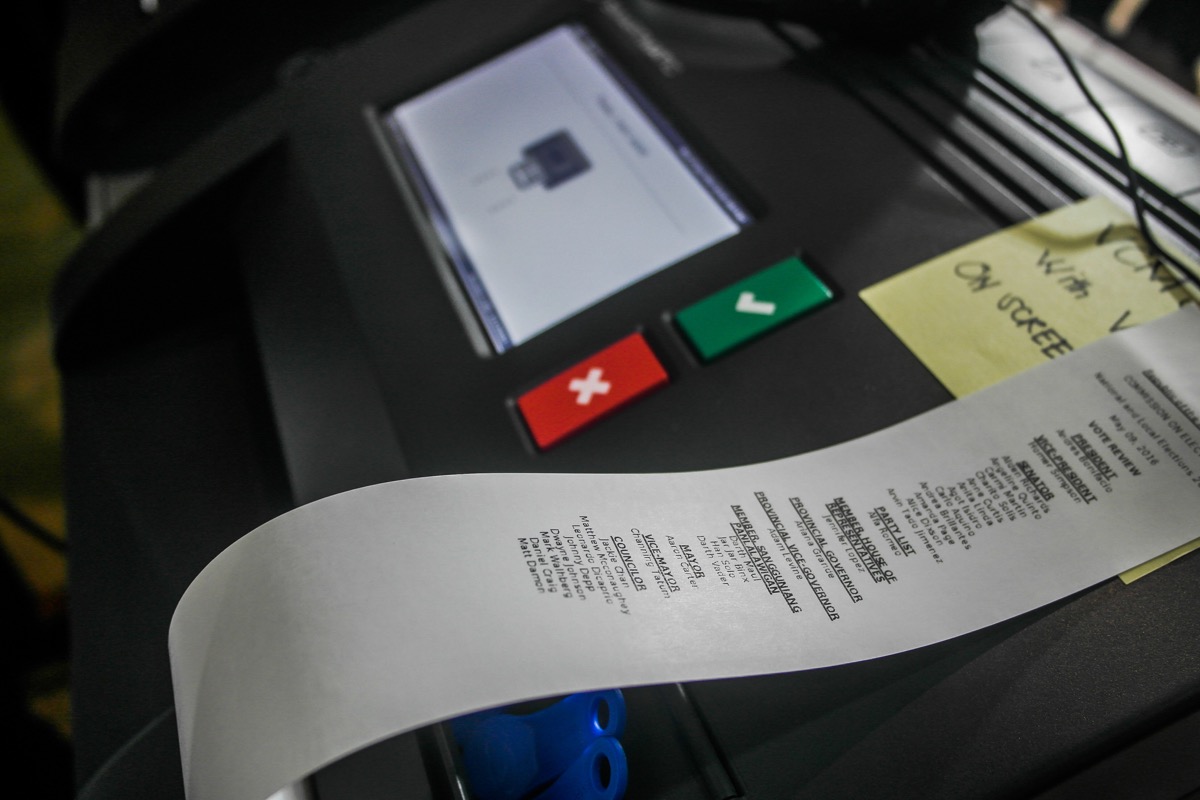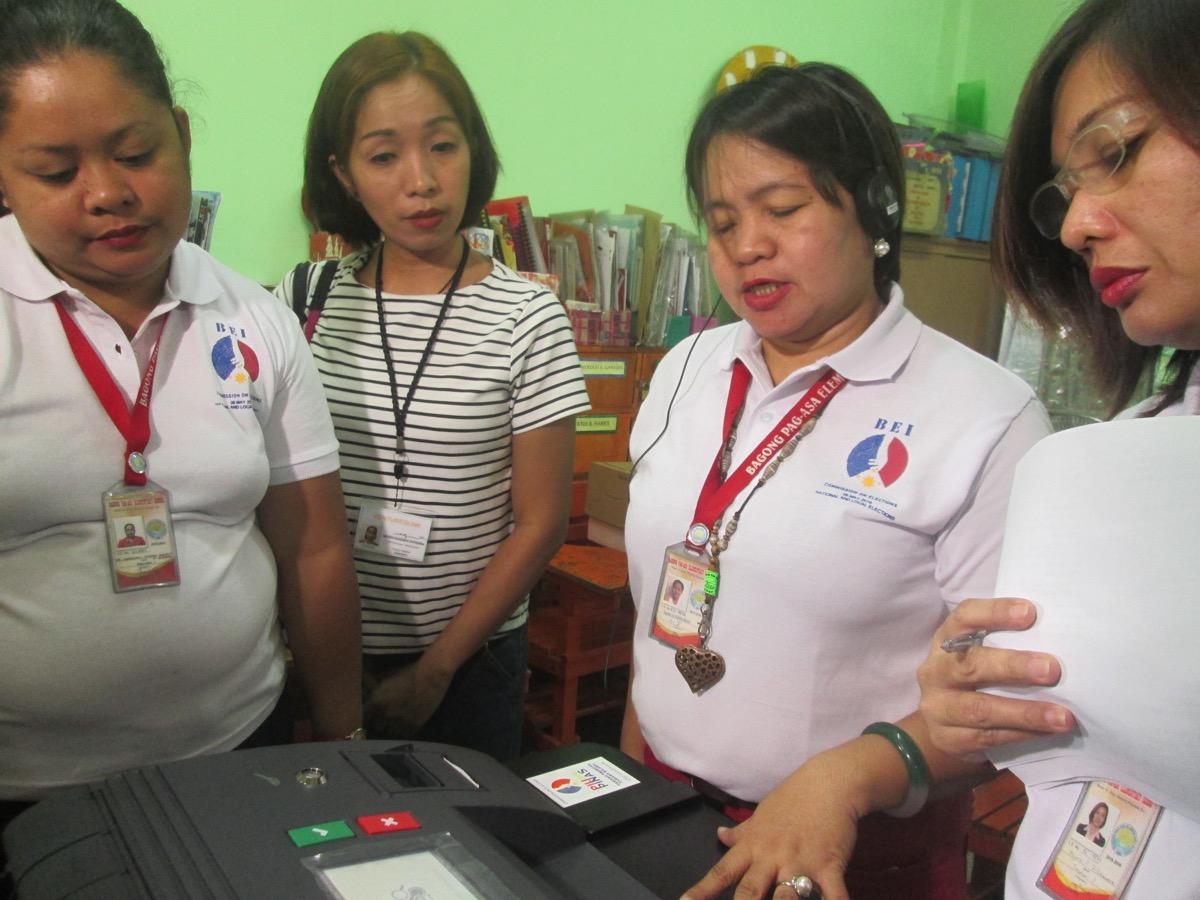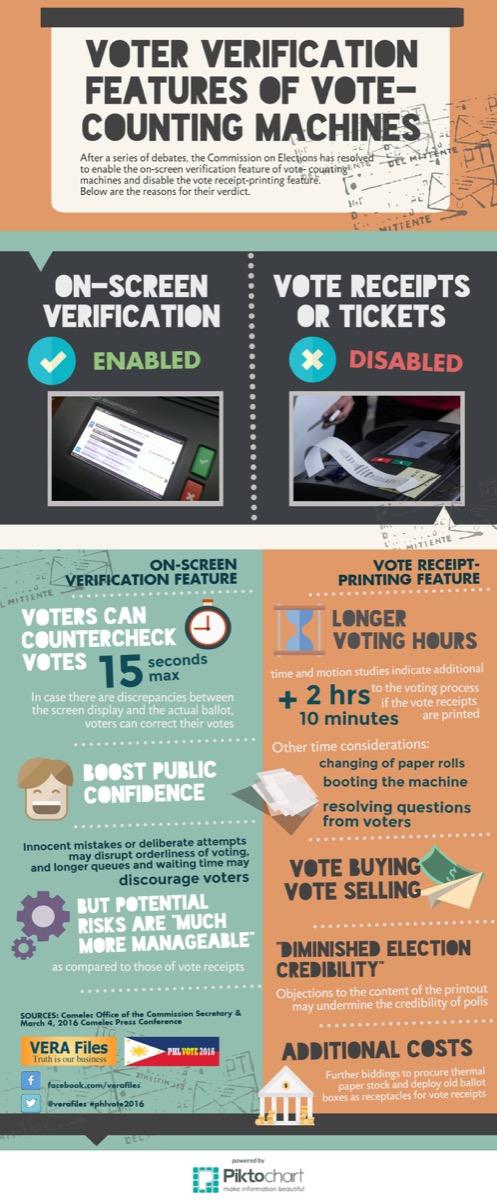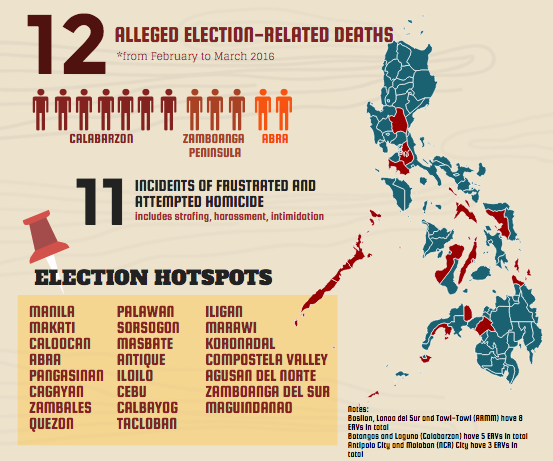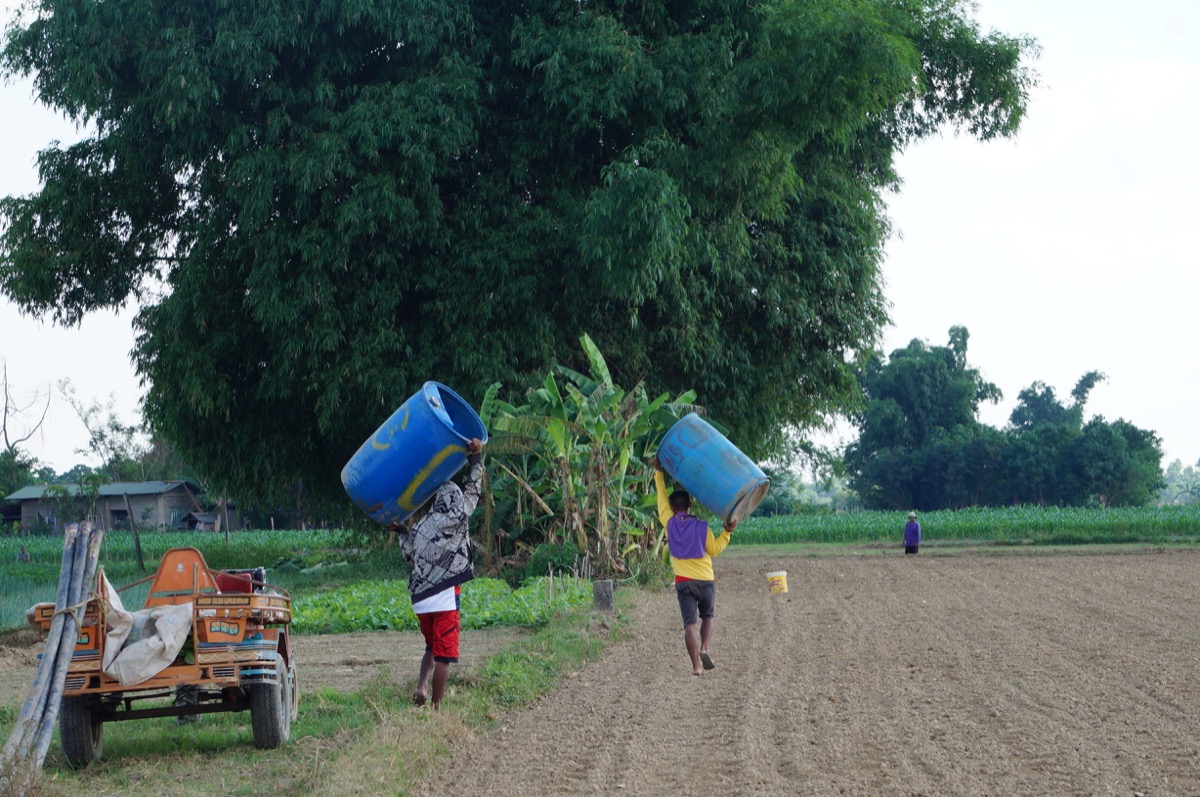By MARIA FEONA IMPERIAL
VOTING by almost 1.38 million registered overseas Filipinos starts on Saturday, but the Department of Foreign Affairs has not deployed vote-counting machines (VCMs) to several countries because they still have to be reconfigured to print vote receipts.
Last-minute adjustments being done on the VCMs to comply with the Supreme Court’s order requiring the issuance of vote receipts have raised fears that a number of them won’t be ready this week.
At the same time, the Commission on Elections has not promulgated the amended rules for the Special Board of Inspectors (SBEI) for overseas voting.
The rules are supplementary to the general instructions, which include overall procedures on voting, counting and transmission.
Comelec spokesperson James Jimenez and Commissioner Luie Guia said, however, the commission en banc will finalize the document within the week.
A total of 16 VCMs have yet to be reconfigured while 16 technicians, one per machine, need to undergo a one-day retraining due to changes brought about by printing vote receipts, according to the DFA Overseas Voting Secretariat (OVS).
As of writing, there is no confirmation yet on the total number of VCMs that have completely undergone reconfiguration.
A total of 131 VCMs will be used for overseas voting.
On April 2 and 3, the machines from Vancouver, Los Angeles and Honolulu were flown to San Francisco, California to have the firmware revised, and then returned to the posts.
On April 8, the eve of the start of this year’s overseas voting, VCMs from Kuala Lumpur will be reconfigured in Hong Kong and then transported back, hopefully in time for the polls.
30 in 85 posts to implement automated voting
Thirty out of 85 posts worldwide will use the automated election system (AES).
(Hover on the map for details and see *note below this post)
Five modes of voting will be observed for this year’s elections.
A total of 132 countries will observe the postal manual voting system. Ballots were sent to voters from Feb. 25 to March 15, according to the DFA OVS. Voters, in turn, will return the accomplished forms to the embassy, consulate or labor office assigned via mail.
In the personal AES, meanwhile, voters are required to show up at the embassy, consulate or labor office in-charge of administering the elections, to cast their vote via the VCMs.
In areas that do not use the AES, manual voting will be observed. A total of 23 areas will observe the modified postal manual system, where voters may manually vote in the embassies or have the ballots mailed to them.
Most areas in North America will observe the mixed voting AES, where voters have the option to personally cast their votes in the embassy or have the ballots mailed to them.
Post Finder still under maintenance
The Comelec has advised overseas voters to check the Certified List of Overseas Voters (CLOV) to avoid confusion.
As of writing, the Post Finder feature of the Comelec website is still under repair after hacktivist group Anonymous Philippines defaced the Comelec website last week.
Economic downturn in Middle East won’t affect voting
A total of 1,376,067 overseas Filipinos are registered for this year’s elections, data from the Comelec Office for Overseas Voting (OFOV) show.
Forty-three percent of voters come from the Middle East and African regions that are suffering from an oil price slump and refugee crisis.
But election observers believe the economic downturn in the Middle East would not disturb the voter turnout.
Damaso Magbual of the National Citizens Movement for Free Elections (Namfrel) said it will only have an effect on voting if the Filipino voters are being repatriated.
Voting in conflict-stricken countries such as Iraq, Syria, Libya and Lebanon have been closed for security purposes. Combined, the four countries have a voter population of 15,783 voters.
Voter figures surpass 1M
Overseas voter registration has doubled this year, from 737,759 in the previous elections.
This is the first time in Philippine electoral history that more than a million qualified overseas registered voters can participate in a national election, said DFA Undersecretary and OFV Chair Rafael Seguis in a training at Antipolo City.
“Let us shoot for the stars in order to reach the moon. I am setting a target of 80 percent voter turnout,” he said.
But the goal may be too ambitious, given the 16.11 percent voter turnout in 2013, based on OFV data.
Voter turnout has been consistently low since 2007, slumping to 16.21 percent from 64.89 in 2004, a year after the Overseas Absentee Voting Act was passed and implemented.
Given around 10 million OFWs, this registration turnout, though doubled, is “a dismal performance,” Magbual said.
Logistics, cost hinder OFWs from voting
Julian Type, election observer and former electoral commissioner in Tasmania, said logistics must also be taken into account when it comes to overseas voting.
“It is fair to say that in many places, it is very difficult for the overseas Filipino worker (OFW) to go to a diplomatic post and vote,” Type said in a press conference.
Especially in areas where personal voting is observed, OFWs are forced to take a leave from work, which entails salary deduction.
“If I am a contract worker in Phuket, Thailand, the law says I should go to register in Bangkok. And then the law says I should go and vote in Bangkok also. How much should I spend for that? Equivalent of 10,000 baht just to be able to cast one vote?” Magbual said.
Potential of Internet voting seen
Based on its Pre-election Assessment Mission (PEAM), Namfrel is recommending Internet voting and the extension of postal voting in “areas where the post system is good,” said PEAM Director Telibert Laoc.
In its paper, Namfrel acknowledged the urgent need to increase voter participation.
Laoc said he hopes the last-minute preparations of Comelec and DFA would not impede upon the voter’s intent to participate.
For Magbual, however, the issue of overseas voters should not be confined to numbers.
“Why should we put emphasis on the overseas voting Filipinos?” he asked.
“(They) are beyond the reach of politicians. They are beyond pressure, they are beyond coercion. Therefore, you can expect them to make a decisive or a well-informed choice,” Magbual said.
*Regions not on the map:
| Administrative Region | Embassy or Consulate | Post | Mode of Voting | Landbased voters | Seafarer voters | Total Number of Voters |
| United Kingdom | 6-8 Suffolk Street, London SW1Y 4HGUNITED KINGDOM OF GREAT BRITAIN | London | Mixed Voting AES | 23,305 | 1,042 | 24,347 |
| Niger | EMBASSY OF THE PHILIPPINES, TRIPOLIKm. 7 Gargaresh Road, Abu Nawas
P.O. Box P.O. Box 12508, Tripoli, Libya |
Tripoli | Postal Manual | 16 | 12 | 28 |
| Central African Republic | No.4 53-B 14 Road, A Close, 2nd Avenue,Gwarimpa, FCT, Abuja, Nigeria | Abuja | Postal Manual | 36 | 36 | 72 |
| Norway | 4th Flr. Nedre Vollgate 4, 0158 Oslo, NorwayP.O. Box 322 Sentrum, 0103 Oslo, Norway | Oslo | Postal Manual | 2,034 | 657 | 2,691 |
| Georgia | Kazim Ozalp Mahallesi, Kumkapi Soka, No. 36 Gazi Osman Pasa, CankayaAnkara 06700, TURKEY | Ankara | Postal Manual | 8 | 3 | 11 |
